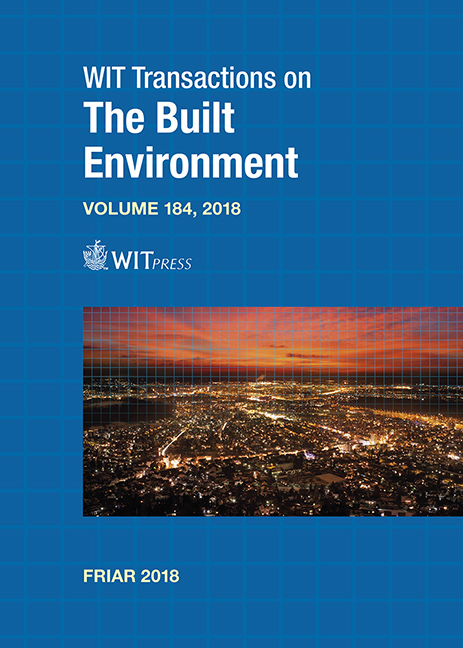EVALUATING THE SUITABILITY OF AIRBUS WORLDDEM FOR FLOOD MODELLING IN DATA-SCARCE REGIONS: THE CASE STUDY OF THE MEGARUMA RIVER, MOZAMBIQUE
Price
Free (open access)
Transaction
Volume
184
Pages
8
Page Range
113 - 120
Published
2018
Size
1,031 kb
Paper DOI
10.2495/FRIAR180111
Copyright
WIT Press
Author(s)
MARÍA BERMÚDEZ, MANUEL ÁLVAREZ, JERÓNIMO PUERTAS, ENRIQUE PEÑA, ANTÓN AMADO
Abstract
The provision of good topographic data is critical to the application of flood inundation models. However, high resolution accurate Digital Elevation Models (DEMs), such as those obtained by LiDAR, are currently unavailable in many regions of the world. Satellite-derived DEMs can thus constitute a suitable alternative. The open access SRTM DEM, with horizontal resolutions of 90 or 30 m, has received much attention from hydraulic modellers. These data, if appropriately treated, can support large-scale flood inundation modelling, providing reasonably accurate risk assessments. Nonetheless, commercial DEMs of higher resolution and accuracy, such as Airbus WorldDEM (12 m resolution), have recently become available worldwide. Their potential for hydraulic modelling has been less explored, but they might eventually replace SRTM data for large-scale modelling, while allowing for more detailed local flood studies worldwide. In this study we evaluate the utility of Airbus WorldDEM topographic data for flood modelling in data-scarce regions. A 3.5-km reach of the Megaruma River in Mozambique is used as a test case. A shallow water model is developed for the reach, based on Airbus WorldDEM data. The hydrological consistency of the DEM is analyzed, and the need for hydrological conditioning for realistic hydrodynamics. The suitability with respect to flood frequency is also evaluated, the hypothesis being that the limitations of the DEM would be less relevant for the modelling of very high flows. The results show that, in spite of the higher resolution and the hydrological editing to which it is subject, WorldDEM dataset still presents limitations that prevent it from being directly used without further processing in local flood modelling studies.
Keywords
digital elevation model, flood modelling, flood wave propagation, hydraulics, Mozambique





